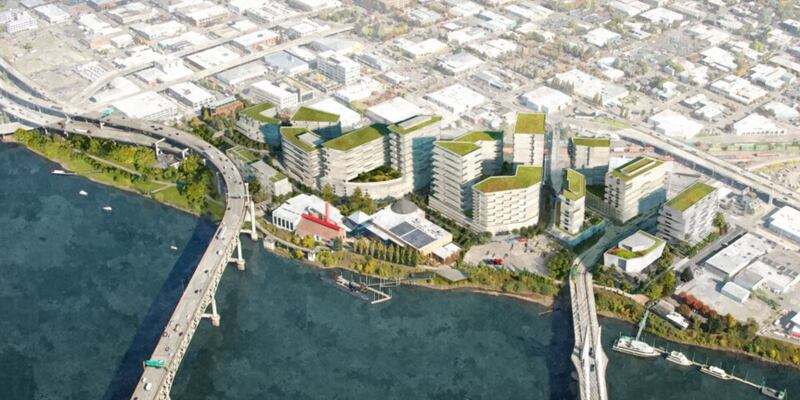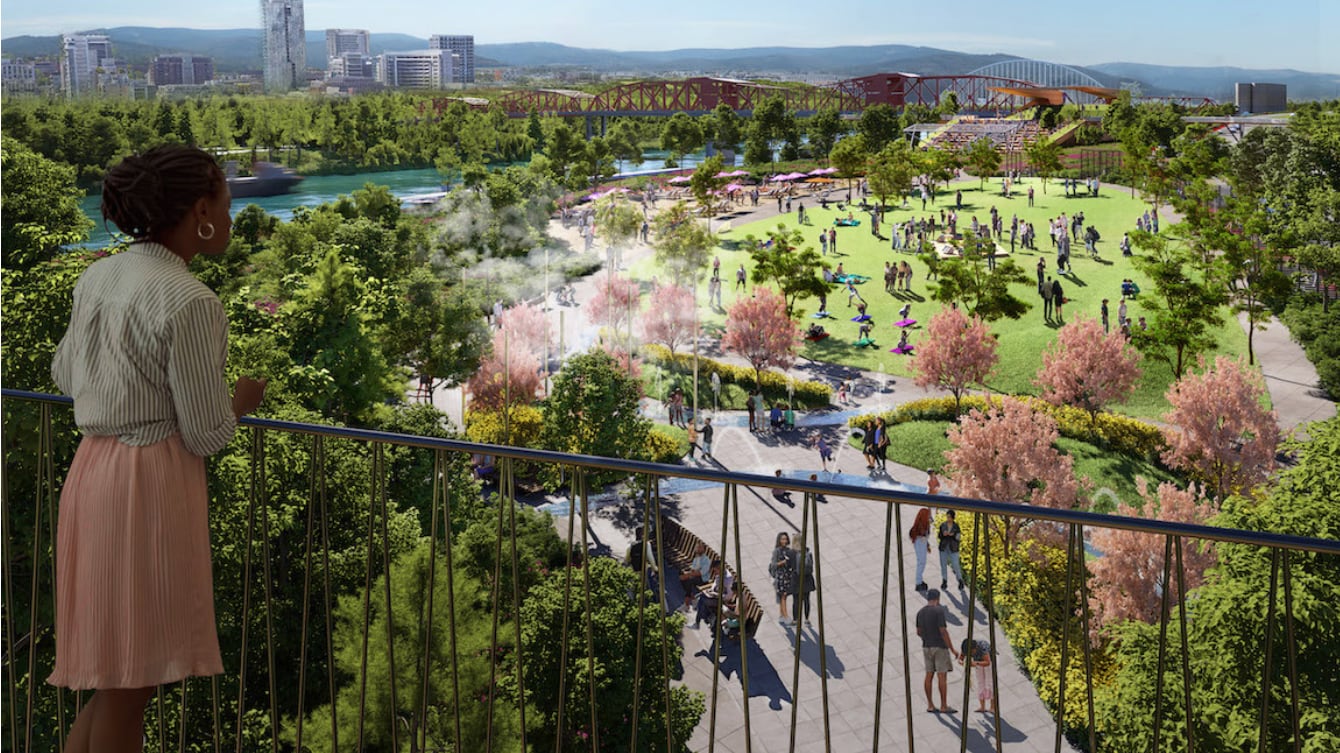In 17 years, Portlanders could have two new ways to reach the Willamette River—and another gateway into Forest Park.
That’s what the regional planning agency Metro had in mind last week when it approved $10 million for projects that officials believe could radically change the Portland landscape over the next decade.
The ideas include new riverfront parks at two junctures on the east bank of the Willamette: one at the Oregon Museum of Science and Industry, and the other just west of Veterans Memorial Coliseum. Each would anchor new neighborhoods: the OMSI District and a revived Albina, the heart of Black Portland.
Both waterfront proposals funded by the Metro Council focus on groups that have been displaced from their longtime homes.
The OMSI District’s waterfront would anchor 24 acres of apartment towers with a waterfront park between the Marquam Bridge and Tilikum Crossing, focused on tribal nations and their connections to the Willamette. Up to $7 million from Metro would fund a public plaza, interactive ecological exhibits, and a lawn for concerts. Plans for the Albina waterfront aren’t as clear. But Metro is giving Albina Vision Trust up to $5 million to buy properties in the Rose Quarter and Lloyd District.
“We had to be intentionally remarkable in how we destroyed that community, and we believe we have to be intentionally remarkable in how we rebuild it,” Rukaiyah Adams, founding board member and chair of the Albina Vision Trust, says in the Albina Vision Trailer.
Metro also hopes to conserve more than 3,000 acres northwest of Forest Park into the North Tualatin Mountains—those are the fir-dotted hills you see driving north of the St. Johns Bridge along Highway 30. The agency would give the Trust of Public Land and Oregon State University $3.5 million to purchase and preserve land with critical ties to water quality, in addition to protecting wildlife habitats, and supporting forest research.

The so-called transformative project grants are funded through a $475 million parks and nature bond measure that voters approved in November 2019. The spending of those bond dollars was sluggish in the pandemic and became a point of contention when advocates demanded a full cleanup of toxic beach sands at Willamette Cove.
Metro leaders have urged the public to take a wider view of how the agency is executing a multidecade plan called Metro 2040.
“The range of projects here is incredible,” Metro Council President Lynn Peterson says. “If you want proof of what Metro 2040 has accomplished, it is the ability to take one dollar and make sure you are getting multiple outcomes.”
She acknowledged that two of the three projects are in central Portland, far from the most neglected parts of the region—and urged Clackamas and Washington counties to present big ideas.
“I would encourage us to start early, start now. Encourage our regional partners to start to think what potential there is for future rounds.”
